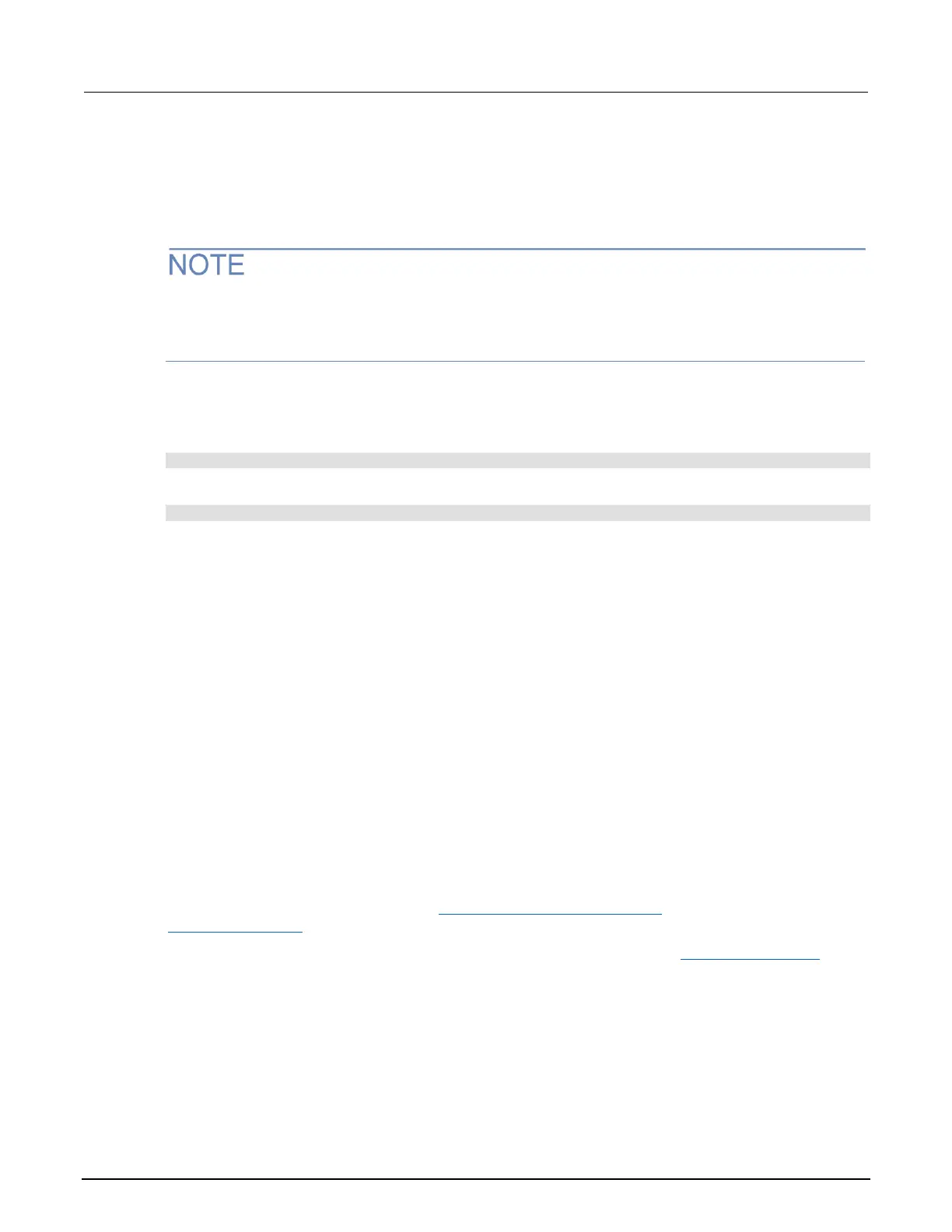7. Press the TRIG key and observe the display. If the "Overflow" message is displayed, select a
higher range until a normal reading is displayed (or press the AUTO key for autoranging). For
manual ranging, use the lowest possible range for the best resolution.
8. To measure other switching channels, repeat steps.
9. When finished, press the OPENALL key to open all channels.
When an amps-only channel is closed, you cannot select a non-amps function.
When making measurements less than 1 µA, to minimize 50/60 Hz noise, use a twisted pair for
current and DMM connections.
Current measurement procedure through remote commands
To set the DMM function for AC current measurements, send the command:
dmm.func = "accurrent"
To set the DMM function for DC current measurements, send the command:
dmm.func = "dccurrent"
Resistance measurements
The Series 3700A can make resistance measurements from 0.1 µΩ to 120 MΩ. For resistances
greater than 1 kΩ, the 2-wire method is typically used for measurements. For resistances less than
1 kΩ, use the 4-wire measurement method to cancel the effect of test-lead and channel-path
resistance.
DMM resistance measurement methods
The method that the Series 3700A uses to measure resistance depends on the resistance range. For
resistance ranges from 1 Ω to 1 MΩ the Series 3700A uses the constant-current method to measure
resistance. For resistance ranges from 10 MΩ to 100 MΩ, the ratiometric method is used.
When the constant-current method is used, the Series 3700A sources a constant current (I) to the
device under test and measures the voltage (V). Resistance (R) is then calculated and displayed
using the known current and measured voltage (R = V/I).
When the ratiometric method is used, test current is generated by a 6.4 V reference through a 10 MΩ
reference resistance (R
REF
).
For more detail on these methods, see Constant-current source method (on page 8-8) and
Ratiometric method (on page 8-9).
The Series 3700A uses four methods to detect open leads. For detail, see Open lead detection (on
page 8-13).

